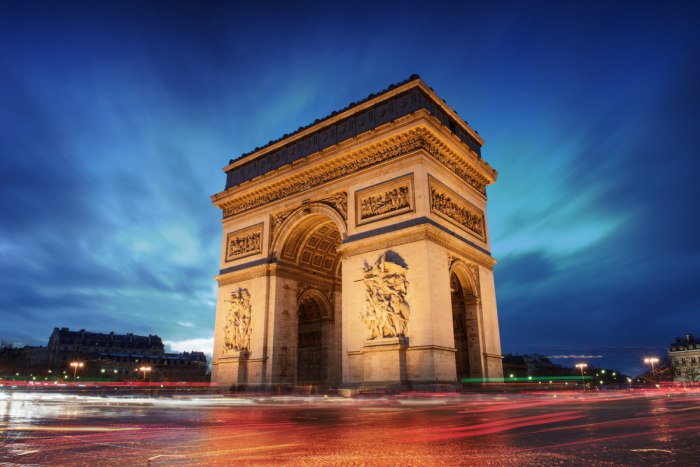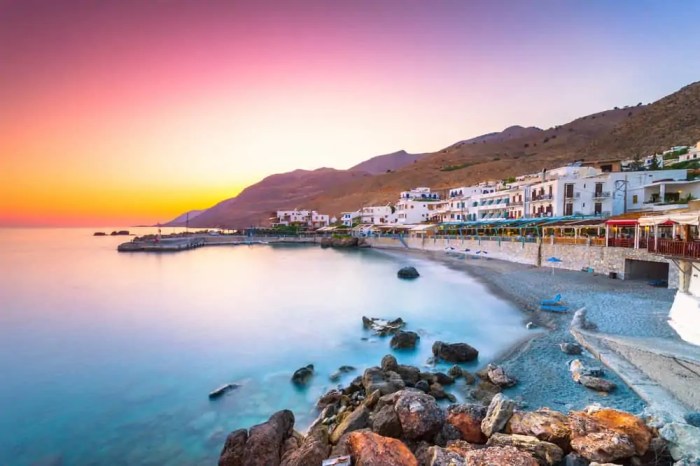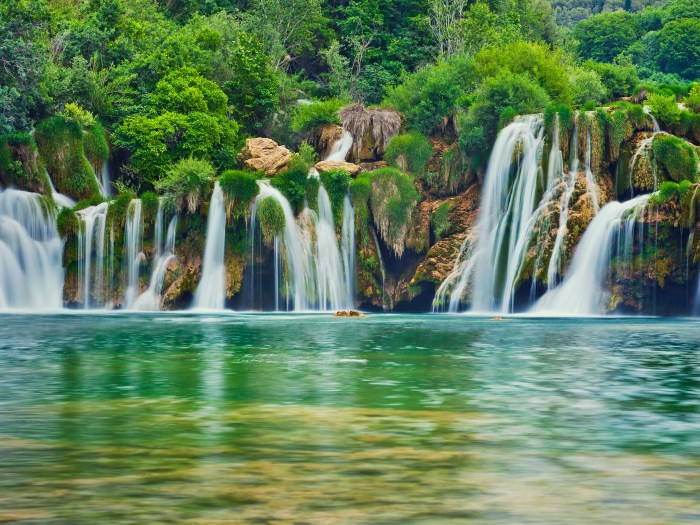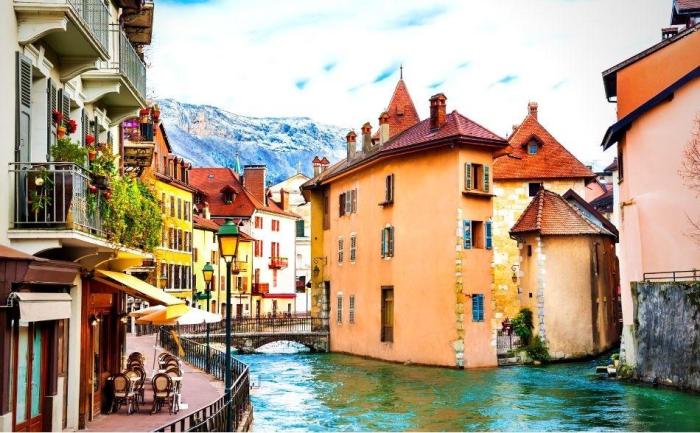Top 10 Places To Visit In Italy
Top 10 Places To Visit In Italy: Imagine strolling through ancient ruins, savoring world-renowned cuisine, and soaking up breathtaking landscapes. From the bustling streets of Rome to the charming villages of Cinque Terre, Italy offers an unforgettable experience for every traveler.
With its rich history, vibrant culture, and diverse landscapes, Italy is a true gem, beckoning you to explore its many treasures.
Whether you’re a history buff, an art enthusiast, a foodie, or simply seeking adventure, Italy has something to offer everyone. From the Colosseum in Rome to the Duomo in Florence, the country is home to some of the most iconic landmarks in the world.
And with its diverse regions, each offering unique experiences, you can tailor your trip to your interests and preferences.
Introduction
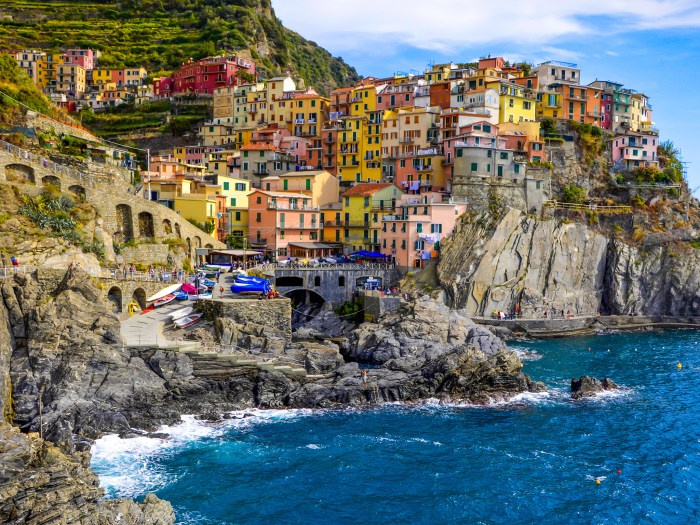
Italy, a land steeped in history, art, and culture, beckons travelers from all corners of the globe. Its iconic landmarks, breathtaking landscapes, and vibrant cities offer an unforgettable journey through time. From the ancient ruins of Rome to the picturesque canals of Venice, Italy boasts a rich tapestry of experiences that captivate the senses.
Italy’s popularity as a travel destination stems from its diverse offerings, catering to a wide range of interests. Whether you’re an art enthusiast seeking Renaissance masterpieces, a foodie indulging in exquisite cuisine, or an adventurer exploring rugged mountains and pristine beaches, Italy has something for everyone.To fully appreciate the beauty and diversity of Italy, it’s essential to venture beyond the well-trodden tourist paths and explore different regions.
Each region boasts its own unique charm, culture, and traditions, offering a truly immersive experience.
Rome: The Eternal City
Rome, the capital of Italy, is a city steeped in history and culture. It was once the heart of the mighty Roman Empire, and its influence can still be felt today in the city’s architecture, art, and traditions. From the iconic Colosseum to the breathtaking Vatican City, Rome offers a captivating journey through time.
The Colosseum and Roman Forum
The Colosseum, a massive amphitheater built in the 1st century AD, is one of the most recognizable landmarks in the world. It was used for gladiatorial contests, public executions, and other forms of entertainment. The Roman Forum, a sprawling complex of temples, basilicas, and other public buildings, served as the political and social center of the Roman Empire.
It offers a glimpse into the daily life of ancient Romans.
The Pantheon
The Pantheon, built in the 2nd century AD, is a marvel of Roman architecture. Its massive dome, made of concrete, is a testament to the ingenuity of Roman engineers. The Pantheon is still used as a church today, and its interior is adorned with beautiful frescoes and mosaics.
Vatican City
Vatican City, an independent city-state located within Rome, is the center of the Catholic Church. It is home to St. Peter’s Basilica, one of the largest and most magnificent churches in the world. The Vatican Museums, which house a vast collection of art and artifacts, are a must-see for any visitor to Rome.
Florence
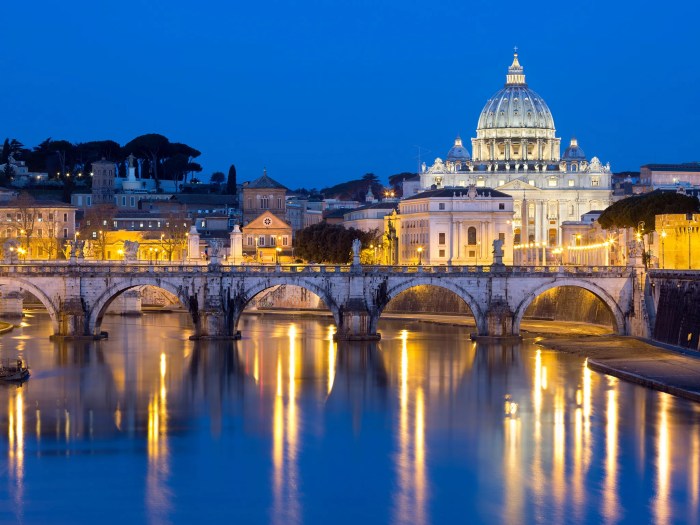
Florence, the capital of the Tuscany region, is a city steeped in art, history, and culture. It’s a place where the past whispers through cobblestone streets and the spirit of the Renaissance thrives in its iconic monuments and museums.
Artistic Heritage
Florence’s artistic heritage is a testament to the transformative power of the Renaissance. The 14th and 15th centuries witnessed a flourishing of artistic expression, and Florence became the cradle of this cultural revolution. Artists like Leonardo da Vinci, Michelangelo, and Raphael, whose works are scattered throughout the city, revolutionized the art world, inspiring generations of artists.
The city’s architectural grandeur, its breathtaking sculptures, and its captivating paintings all reflect this golden age.
Art Museums
Florence boasts a wealth of art museums, each housing masterpieces that capture the essence of the Renaissance.
- The Uffizi Gallery, a masterpiece in itself, houses an unparalleled collection of Florentine art. Visitors can marvel at Botticelli’s “The Birth of Venus,” Leonardo da Vinci’s “Annunciation,” and Michelangelo’s “Doni Tondo,” among other iconic works.
- The Accademia Gallery is renowned for its collection of sculptures by Michelangelo, most notably the iconic “David.” Standing at over 17 feet tall, the marble statue is a symbol of human perfection and artistic prowess.
Architectural Marvels
Florence’s architectural marvels are as captivating as its art.
- The Duomo, or Florence Cathedral, is a masterpiece of Gothic architecture, its magnificent dome dominating the city’s skyline. Designed by Filippo Brunelleschi, the dome is a marvel of engineering and a testament to the ingenuity of the Renaissance era.
- The Ponte Vecchio, a medieval bridge, is unique for its shops lining both sides. Unlike most bridges, the Ponte Vecchio was spared from destruction during World War II, preserving its charming medieval character.
- Palazzo Pitti, a grand palace built in the 15th century, is a testament to the wealth and power of the Medici family. The palace houses five museums, including the Gallery of Modern Art and the Costume and Fashion Institute.
Venice
Venice, a city built on a network of canals and islands, offers a truly unique and enchanting experience. Known as the “Floating City,” Venice is a testament to human ingenuity and adaptation, where water serves as both a challenge and an opportunity.
The City’s Unique Characteristics, Top 10 Places To Visit In Italy
Venice’s foundation lies in its intricate system of canals, which serve as its streets and arteries. The city is made up of 118 small islands connected by over 400 bridges, creating a mesmerizing labyrinth of waterways. The absence of cars and the gentle lapping of water against the canals create a serene and tranquil atmosphere.
Gondolas and the Grand Canal
Gondolas, the iconic Venetian boats, are a symbol of the city’s romance and history. These long, narrow boats, traditionally crafted from a single piece of wood, glide gracefully through the canals, offering a unique perspective of the city’s beauty. The Grand Canal, Venice’s main waterway, is a breathtaking sight, lined with palazzos, bridges, and churches.
A gondola ride along the Grand Canal is a must-do for any visitor.
Must-See Attractions
- St. Mark’s Square: A vibrant and bustling hub, St. Mark’s Square is surrounded by iconic landmarks, including St. Mark’s Basilica, Doge’s Palace, and the Campanile bell tower.
- Doge’s Palace: A magnificent example of Venetian Gothic architecture, Doge’s Palace served as the seat of power for the Venetian Republic. The palace houses impressive art collections, intricate decorations, and stunning views of the lagoon.
- Rialto Bridge: One of the four bridges spanning the Grand Canal, the Rialto Bridge is known for its bustling market and picturesque views. The bridge is a popular spot for tourists and locals alike, offering a chance to soak in the vibrant atmosphere of Venice.
Cinque Terre
Cinque Terre, meaning “Five Lands” in Italian, is a string of five picturesque coastal villages nestled along the rugged Italian Riviera in Liguria, northwestern Italy. These charming villages, perched on steep cliffs overlooking the azure Mediterranean Sea, offer a captivating blend of natural beauty, rich history, and authentic Italian charm.
Hiking Trails
Cinque Terre is renowned for its breathtaking hiking trails that connect the five villages. The “Sentiero Azzurro,” or Blue Trail, is the most popular and scenic route, winding along the cliffs and offering panoramic views of the coastline, vineyards, and the crystal-clear waters.
The trail is divided into five sections, each with its unique character and challenges. These trails are a great way to experience the beauty of Cinque Terre and to get a feel for the region’s unique landscape.
Stunning Scenery and Authentic Italian Life
The villages of Cinque Terre are a feast for the senses. The colorful houses, narrow cobblestone streets, and quaint piazzas create a timeless atmosphere. The region is also known for its delicious seafood, fresh produce, and local wines.
Visitors can enjoy a leisurely stroll through the villages, stopping at local trattorias for a taste of authentic Italian cuisine. Cinque Terre is a place where time seems to slow down, allowing visitors to fully immerse themselves in the beauty and charm of this enchanting region.
Tuscany
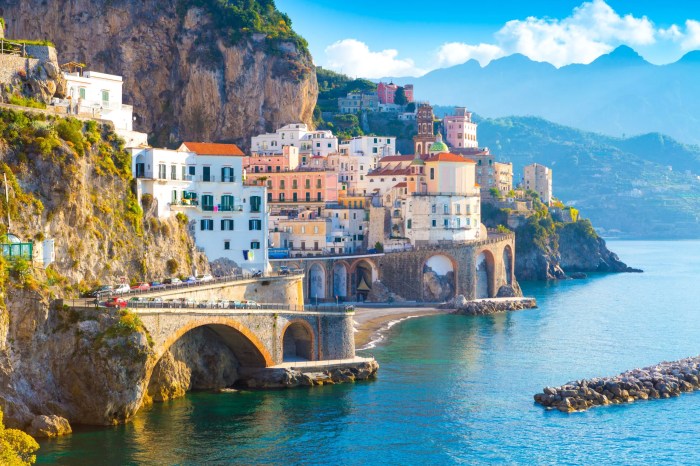
Tuscany, often called the “Heart of Italy,” is a region that embodies the country’s romantic charm. Rolling hills, vineyards stretching as far as the eye can see, and picturesque towns with terracotta roofs—Tuscany is a feast for the senses. From the Renaissance art in Florence to the ancient Etruscan ruins, this region offers a glimpse into Italy’s rich history and culture.
The Beauty of Tuscany
Tuscany’s landscape is a symphony of natural beauty. Rolling hills, covered in vineyards and olive groves, create a picturesque panorama. Charming towns, like San Gimignano, rise from the hills, their medieval towers reaching for the sky. The region’s beauty is not just visual; it’s also felt in the fresh air, the warmth of the sun, and the scent of wildflowers in the spring.
Culinary Delights
Tuscany is a culinary paradise. The region is famous for its simple yet delicious cuisine, often prepared with fresh, local ingredients. Some of Tuscany’s most famous dishes include:
- Bistecca alla Fiorentina: A thick, grilled T-bone steak, seasoned only with salt and pepper, and cooked to perfection.
- Ribollita: A hearty bread soup, made with vegetables, beans, and stale bread.
- Pasta alla Gricia: A simple but satisfying pasta dish made with guanciale (cured pork cheek), pecorino romano cheese, and black pepper.
Tuscany is also known for its world-renowned wines, particularly Chianti. Made from Sangiovese grapes, Chianti is a full-bodied red wine with a slightly tart flavor. It’s the perfect accompaniment to a Tuscan meal.
Italy is packed with iconic sights, from the Colosseum to the canals of Venice. But if you’re looking for something a little different, consider venturing beyond the usual tourist traps and exploring the breathtaking beauty of the Alps. Check out this list of the Top 30 Places In The Alps for some serious inspiration.
You’ll find stunning mountain peaks, charming villages, and incredible hiking trails that will make you feel like you’ve stepped into a fairytale. And when you’re ready to return to Italy, you’ll have a whole new appreciation for its diverse landscape.
Must-See Destinations
Tuscany is full of fascinating places to explore. Here are three of the region’s must-see destinations:
- Siena: This medieval city is home to the famous Piazza del Campo, a shell-shaped square that hosts the Palio, a thrilling horse race held twice a year.
- Pisa: Famous for its leaning tower, Pisa is a city rich in history and art. Visit the Duomo, the Baptistery, and the Camposanto Monumentale, a stunning cemetery.
- San Gimignano: Known for its towering medieval towers, San Gimignano is a picture-perfect Tuscan town. Wander through the narrow streets, visit the art museums, and sample the delicious local wines.
Amalfi Coast
The Amalfi Coast is a breathtaking stretch of coastline in southern Italy, known for its dramatic beauty, charming villages, and stunning beaches. This UNESCO World Heritage Site offers a truly unforgettable experience for travelers seeking a blend of history, culture, and natural wonders.
Amalfi Drive
The Amalfi Drive, also known as the SS163, is a winding coastal road that hugs the cliffs, offering panoramic views of the turquoise waters, colorful villages, and lush greenery. This scenic route is a highlight of any visit to the Amalfi Coast, allowing travelers to soak in the beauty of the region at their own pace.
Must-See Villages
The Amalfi Coast is home to several picturesque villages, each with its own unique character and charm.
- Positano: This iconic village is known for its colorful houses cascading down the hillside, its stunning beaches, and its vibrant atmosphere. Positano is a popular destination for fashionistas and art lovers, with its numerous boutiques and art galleries.
- Amalfi: The namesake of the coast, Amalfi is a historic town with a rich maritime past. Its beautiful cathedral, the Duomo di Amalfi, is a must-see attraction, while the town’s charming streets and squares are perfect for exploring.
- Ravello: Perched high on the cliffs, Ravello offers breathtaking views of the coastline and the surrounding countryside. This tranquil village is a haven for artists and musicians, with its stunning gardens and historic villas.
Naples
Naples, a city pulsating with life and history, sits on the Bay of Naples in southern Italy. It’s a place where ancient ruins meet bustling street markets, and the aroma of freshly baked pizza fills the air. Beyond its iconic culinary legacy, Naples is a vibrant cultural hub with a rich artistic heritage and a captivating street life.
Italy is a country with so much to offer, from ancient ruins to stunning beaches. When making a list of the top 10 places to visit in Italy, you can’t forget about the Italian Riviera, a region known for its beautiful coastline and charming towns.
If you’re looking for a place to relax and soak up the sun, be sure to check out Top 10 Places On The Italian Riviera. After exploring the Riviera, you can head inland to experience the culture and history of Italy’s many cities and towns.
Naples’ Culinary Legacy
Naples is synonymous with pizza, and for good reason. The city is considered the birthplace of this beloved dish, and its history is deeply intertwined with Neapolitan culture. Pizza originated in Naples in the 18th century, initially as a simple street food for the working class.
Over time, it evolved into a culinary masterpiece, with its thin, crispy crust, flavorful tomato sauce, and fresh toppings.
“Pizza is a Neapolitan invention. It was born in the streets of Naples, where people needed a quick and easy meal.”
Pizza Napoletana
This traditional style of pizza, with its characteristic charred crust and airy dough, is a UNESCO-recognized intangible cultural heritage.
Other Culinary Delights
Beyond pizza, Naples offers a wealth of culinary treasures. From the hearty ragù alla Napoletana (Neapolitan meat sauce) to the delectable pasta e fagioli (pasta and beans), Naples’ cuisine reflects its rich history and agricultural heritage.
Street Food Culture
Naples is a haven for street food enthusiasts. From the iconic sfogliatella (a pastry filled with ricotta cheese and candied orange peel) to the savory frittatina (a fried egg omelet), street food is an integral part of Neapolitan culture.
Naples’ Vibrant Culture
Naples is a city that comes alive with music, art, and street life.
Music
Naples has a rich musical tradition, with its own unique style of folk music, known as Neapolitan song. The city is also home to the Teatro San Carlo, one of the oldest and most prestigious opera houses in the world.
Art
Naples is a treasure trove of art and architecture. The city is home to numerous museums, including the National Archaeological Museum, which houses an impressive collection of Roman artifacts.
Street Life
The streets of Naples are a vibrant tapestry of life. From the bustling street markets to the lively piazzas, Naples is a city where people come together to socialize, shop, and enjoy the simple pleasures of life.
Must-See Attractions
The Historical Center
Italy’s got the whole romantic, historical vibe going on, but if you’re looking for something a little more rugged and dramatic, you gotta check out Iceland. Seriously, the landscapes there are out of this world. If you want to see some incredible natural wonders, check out Top 10 Places To Visit in Iceland for some serious inspiration.
After that, you can come back to Italy and soak up all the culture and delicious food you can handle.
The historic center of Naples is a UNESCO World Heritage Site, filled with ancient churches, palaces, and charming piazzas. Don’t miss the Duomo, the city’s main cathedral, and the Royal Palace of Naples.
The National Archaeological Museum
This museum houses an impressive collection of Roman artifacts, including the Farnese Collection, a group of sculptures that are among the most important works of Roman art.
Mount Vesuvius
No trip to Naples is complete without a visit to Mount Vesuvius, the volcano that famously buried the ancient Roman cities of Pompeii and Herculaneum. Take a hike to the summit for stunning views of the Bay of Naples.
Sicily: The Island of Wonders
Sicily, the largest island in the Mediterranean Sea, is a captivating destination brimming with history, culture, and breathtaking landscapes. Its strategic location has made it a crossroads of civilizations for centuries, leaving an indelible mark on its heritage. From ancient Greek temples to Norman cathedrals, Byzantine mosaics to Arab gardens, Sicily offers a kaleidoscope of architectural styles and artistic expressions.
Exploring Sicily’s Rich History and Culture
Sicily’s rich history is evident in its diverse cultural tapestry, shaped by the influence of numerous civilizations that have called the island home. The island’s strategic location in the Mediterranean Sea has made it a coveted prize for empires throughout history.
- Ancient Greeks:The Greeks established colonies in Sicily as early as the 8th century BC, leaving behind a legacy of magnificent temples and theaters, such as the Valley of the Temples in Agrigento.
- Romans:The Romans conquered Sicily in the 3rd century BC, bringing with them their advanced infrastructure and legal system. Evidence of their presence can be seen in Roman amphitheaters, baths, and villas scattered across the island.
- Byzantines:The Byzantines ruled Sicily for several centuries, introducing their artistic traditions and religious practices. The island’s Byzantine mosaics, such as those found in the Cappella Palatina in Palermo, are a testament to this era.
- Arabs:The Arabs conquered Sicily in the 9th century AD, bringing with them their distinctive architecture, agriculture, and culture. The island’s Arab gardens, such as the Giardino della Kolymbetra in Agrigento, are a reminder of this period.
- Normans:The Normans, a group of Viking descendants, conquered Sicily in the 11th century AD, establishing a kingdom that blended Byzantine, Arab, and Latin influences. This era is characterized by the construction of magnificent Norman cathedrals, such as the Cathedral of Monreale.
Sicily’s Diverse Landscapes
Sicily’s diverse landscapes offer a wide range of experiences for travelers. From snow-capped volcanic mountains to sun-drenched beaches, from ancient ruins to charming coastal towns, the island has something for everyone.
- Volcanic Mountains:Mount Etna, Europe’s largest active volcano, dominates the eastern part of the island. Hiking trails lead to the summit, offering stunning views of the surrounding landscape. The volcano’s fertile slopes are home to vineyards, orchards, and forests.
- Beaches:Sicily’s coastline is dotted with beautiful beaches, ranging from sandy stretches to rocky coves. The island’s crystal-clear waters are perfect for swimming, snorkeling, and diving. Popular beach destinations include Taormina, San Vito Lo Capo, and Cefalù.
- Ancient Ruins:Sicily is home to a wealth of ancient ruins, including Greek temples, Roman amphitheaters, and Byzantine churches. The Valley of the Temples in Agrigento is a UNESCO World Heritage Site that showcases the grandeur of ancient Greek architecture.
Visiting Sicily: Palermo, Taormina, and Mount Etna
Sicily’s major cities and natural wonders offer a diverse range of experiences for travelers.
- Palermo:The island’s capital city, Palermo, is a vibrant metropolis with a rich history and culture. It is home to numerous architectural gems, including the Norman Palace, the Cathedral of Palermo, and the Cappella Palatina. Palermo’s bustling markets, delicious street food, and lively nightlife make it a must-visit destination.
- Taormina:Perched on a cliff overlooking the Ionian Sea, Taormina is a charming town renowned for its stunning views, ancient Greek theater, and picturesque streets. It is a popular destination for relaxation, shopping, and cultural experiences.
- Mount Etna:A visit to Mount Etna, Europe’s largest active volcano, is a truly awe-inspiring experience. Hiking trails lead to the summit, offering stunning views of the surrounding landscape. The volcano’s fertile slopes are home to vineyards, orchards, and forests. Visitors can also explore the volcano’s craters and lava flows, providing a glimpse into the island’s geological history.
Milan: Top 10 Places To Visit In Italy
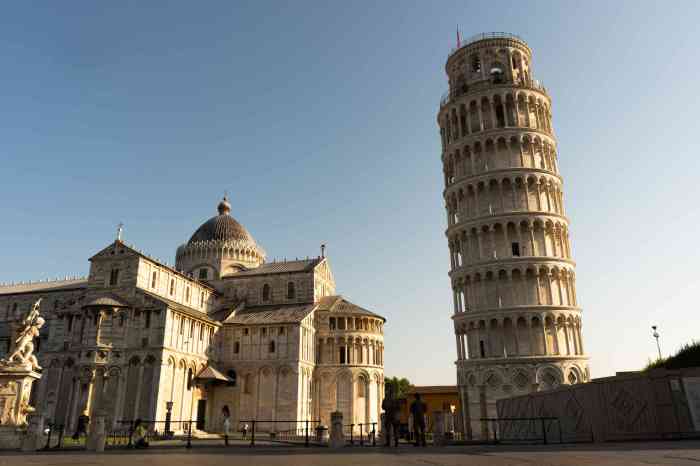
Milan is a city that effortlessly blends modern sophistication with timeless charm. Beyond its reputation as a global fashion capital, Milan offers a rich tapestry of art, culture, and architectural wonders. From the iconic Duomo to the bustling Galleria Vittorio Emanuele II, Milan captivates visitors with its captivating blend of history and contemporary flair.
Fashion and Design
Milan is synonymous with fashion, boasting some of the world’s most renowned designers and fashion houses. The city’s influence on global trends is undeniable, with its fashion weeks attracting international attention and showcasing the latest creations from iconic brands like Armani, Prada, Versace, and Dolce & Gabbana.
The city’s fashion scene is not limited to high-end boutiques and runway shows; it extends to the streets, where Milanese residents embrace a sophisticated and stylish aesthetic.
Architectural Marvels
Milan is a city of architectural marvels, each structure a testament to the city’s rich history and artistic heritage. The Duomo, Milan’s majestic cathedral, is a breathtaking masterpiece of Gothic architecture. Its intricate facade, adorned with countless statues and spires, is a symbol of Milan’s enduring spirit.
The Galleria Vittorio Emanuele II, a grand shopping arcade, is a testament to the city’s architectural prowess. This glass-covered structure, built in the late 19th century, features elegant shops, cafes, and restaurants, making it a popular destination for both locals and tourists.
Cultural Gems
Milan’s cultural offerings are as diverse as its fashion scene. The Teatro alla Scala, one of the world’s most prestigious opera houses, is a must-visit for music lovers. Its opulent interior and world-class performances make it a truly unforgettable experience.
The Pinacoteca di Brera, a renowned art museum, houses a collection of masterpieces from Italian and European artists. From Renaissance paintings to modern sculptures, the Pinacoteca offers a glimpse into the evolution of art history.
Final Review
From the grandeur of Rome to the romance of Venice, from the culinary delights of Naples to the artistic masterpieces of Florence, Italy is a country that will captivate your senses and leave a lasting impression. Whether you’re seeking history, culture, adventure, or simply a taste of the good life, Italy is a destination that will stay with you long after your journey ends.
FAQ
What’s the best time to visit Italy?
The best time to visit Italy depends on your preferences. Spring and fall offer pleasant weather and fewer crowds, while summer is ideal for beach vacations.
How much does it cost to travel to Italy?
Travel costs to Italy vary depending on your travel style and budget. Accommodation, transportation, and food can be expensive, especially in popular tourist destinations. However, you can find budget-friendly options by traveling during the off-season or staying in hostels.
Do I need a visa to travel to Italy?
Whether you need a visa to travel to Italy depends on your nationality. Most citizens of European Union countries do not need a visa, while citizens of other countries may require a visa depending on their length of stay.
What language is spoken in Italy?
The official language of Italy is Italian, but many people also speak English, especially in tourist areas.

